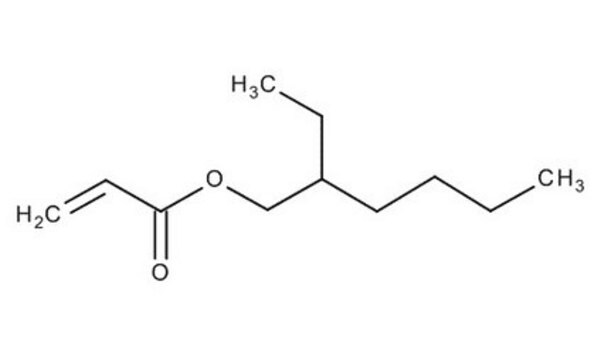8.18897
Polyethylenglykol
20000 (stabilised) for synthesis
Synonym(e):
Poly(ethylenglykol), PEG
About This Item
Empfohlene Produkte
Dampfdruck
<0.01 hPa ( 20 °C)
Qualitätsniveau
Form
flakes
Selbstzündungstemp.
>320 °C
Wirksamkeit
28000 mg/kg LD50, oral (Rat)
>20000 mg/kg LD50, skin (Rabbit)
pH-Wert
5-7 (20 °C, 100 g/L in H2O)
mp (Schmelzpunkt)
58-63 °C
Übergangstemp.
flash point 240 °C
Löslichkeit
500 g/L
Dichte
1.2 g/cm3 at 20 °C
Schüttdichte
400‑500 kg/m3
Lagertemp.
2-30°C
SMILES String
C(CO)O
InChI
1S/C2H6O2/c3-1-2-4/h3-4H,1-2H2
InChIKey
LYCAIKOWRPUZTN-UHFFFAOYSA-N
Suchen Sie nach ähnlichen Produkten? Aufrufen Leitfaden zum Produktvergleich
Anwendung
It can also be used as:
- A surfactant in the synthesis of nanomaterials by various methods to control the size and morphology of nanostructure.
- A support to prepare zero-valent iron-PEG nanocomposite material (Fe/PEG) applicable in the removal of Pb(II) from aqueous solutions.
Hinweis zur Analyse
Schmelzbereich (oberer Wert): ≤ 66 °C
Hydroxylzahl: 4 - 7
Mittlere Molmasse: 16000 - 28000
Lagerklassenschlüssel
10 - Combustible liquids
WGK
WGK 1
Flammpunkt (°F)
281.5 °F - closed cup
Flammpunkt (°C)
138.6 °C - closed cup
Analysenzertifikate (COA)
Suchen Sie nach Analysenzertifikate (COA), indem Sie die Lot-/Chargennummer des Produkts eingeben. Lot- und Chargennummern sind auf dem Produktetikett hinter den Wörtern ‘Lot’ oder ‘Batch’ (Lot oder Charge) zu finden.
Besitzen Sie dieses Produkt bereits?
In der Dokumentenbibliothek finden Sie die Dokumentation zu den Produkten, die Sie kürzlich erworben haben.
Kunden haben sich ebenfalls angesehen
Unser Team von Wissenschaftlern verfügt über Erfahrung in allen Forschungsbereichen einschließlich Life Science, Materialwissenschaften, chemischer Synthese, Chromatographie, Analytik und vielen mehr..
Setzen Sie sich mit dem technischen Dienst in Verbindung.

